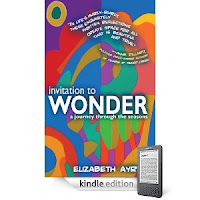 |
| Author, Selgin |
AA: How does having been born and raised in Bethel impact your writing? For example, does it flavor your work with a particular sense of neighborhood or community, or of family?
PS: Setting and atmosphere are things I hold dear as a writer, but
also just as someone living in the world. And I do think environment plays a
crucial role, if not the greatest role, in shaping who we are. When I was
growing up there, Bethel seemed to me a fairly ordinary place—a bit shabby,
modest in size and in just about every other dimension, a "typical"
American town. Now, looking back, "typical" translates to
"prototypical" and even to "perfect." it really was the
perfect place for a boy to grow in (I assume it was perfect for girls, too, but
can't be as sure). I remember the complete freedom with which my pals and I
hiked and rode our bikes around, how there seemed to be—no, there were—infinite
worlds within that world: fields, forests, railroads, ponds, brooks, caves and
quarries, dumps, factories, and so on, all ours to explore.
Just to share one example, in the woods behind a house in a
then recently constructed development, I remember stumbling on an old car dump.
There must have been at least a dozen antique rusted wrecks of cars and buses
dating from 1915 or so, with enormous headlamps and sagging running boards.
Imagine the joy of this discovery, the sense of wonder and privilege aroused by
it, as if we'd entered the kingdom of Oz! Another time, walking through either
a field or a sandlot, I remember coming upon the discarded, zebra-striped long
arms of a railway crossing. There they were, disassociated from the railroad
tracks that were their raison d'etre,
with pie-sized sunflowers sprouting around them. This chance discovery on a
sweltering summer day was, in its way, I'm sure, as enchanting as my very first
kiss.
I could go on and on about such minor miracles engendered by
that setting (the "Oasis" water fountain in the back of the Union
Trust Savings Bank, dispensing water so achingly cold it numbed your lips). And
how about Mr. Noe, the proprietor of Noe's clothing store, in his white
shirtsleeves with his yellow tape measure draped like a surplice around him? Or
Dante Vaghi, millworker/flying saucer prophet, taking us boys into the back
room of his woodworking shed to share his latest UFO tales? As a teenager
intent on flaunting my sophistication through cynicism, I frowned on my hometown.
I decided that it was "provincial," a backwater inhabited mainly by
philistines. Now I'd give both little fingers to see every last brick and
shadow reinstated there just as they were back then, circa 1965. Since I don't
have a time machine, and want to keep my fingers, instead I wrote a novel.
AA: How do you view the importance of setting and sense of
place in your work? And would you—or how would you—differentiate the two?
PS: My mantra to my writing students: Always be writing scene. For
them to do this, they first have to define "scene" in such a way
that it doesn't necessarily mean rendering "action" and/or
"dialogue" or even "setting," though all of those things
may be present however invisible and unstated, but implied. In other words,
though we're taught things like "show, don't tell," the dichotomy
between showing and telling is, at least potentially, a false dichotomy. As
long as a writer knows that she is writing within—or leading us toward—a
particular event set in a particular place—then she's writing a scene. As long
as there's at least one character, or one implied character, and that character
is embodied in a particular time and space and involved in a particular action
(for instance, standing at the end of a dock watching the sun set or ironing a
shirt), even if all we are reading is that character's thoughts, a series of
memories or ruminations, or an essay on the quality of sunlight at dusk or the
best way to iron a pleat, still, we're reading a scene.
It comes down to intent. If you, as the writer, know at any
given moment not just who your characters are, but where they are and what they
are doing, then, essentially, you're writing a scene and not confronting your
reader with disembodied ideas or abstractions. This gets to setting, since what
keeps our characters (and our readers) grounded in scene is the embodiment of
their sensations (thoughts, feelings, actions, etc.) in a body or bodies
inhabiting a particular time and space as conveyed by way of a consistent
and thorough point of view. Lose that sense of embodiment, forget that
you're writing scene, and you lose that grounding; you lose readers.
If there's a different between "setting" and
"sense of place," it may be that a "sense of place" is a
good thing to start with, an appreciation for and grasp of the qualities that
characterize a particular environment. But then we need to set our characters
in that place—"setting" as verb, something that we, as writers, need
not only to feel and consider, but to do.
For more on Peter's life and work, visit Peter Selgin. On July 30, Peter will read his richly woven work, which includes all these elements, at Byrd’s Books in his native Bethel, Connecticut.





